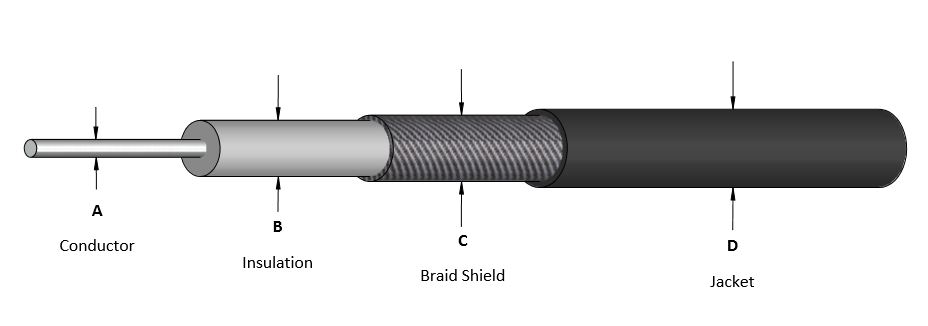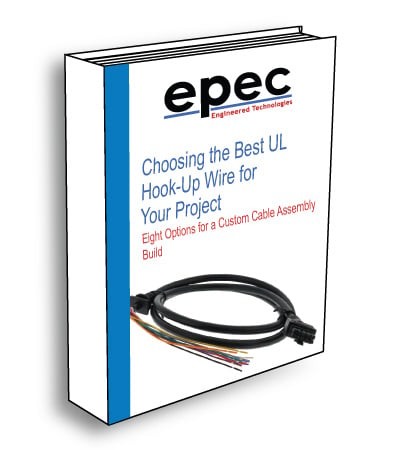RF Coaxial Cables
RF coax is defined by three elements consisting of a center conductor, an outer conductor, and an insulating spacer between the two conductors. Coaxial cables use a center conductor to transmit electrical signals, generally comprised of a single solid copper wire.
The solid copper wire is encased by an insulation layer and surrounded by a woven metal braid. In many cases, the cable is protected by an insulating layer, also known as the outer jacket. By design, coax virtually eliminates electric and magnetic leakage. These fields are restricted to the dielectric with minimal leakage outside the braid. Get the information you need, coaxial cable and connector options for low-cost RF cables.
Coaxial Cable Structure
Due to the cable shielding, electric and magnetic fields external to the cable do not interfere with signals inside the cable. Having this characteristic makes coax highly suitable for transmitting electrical signals that are either intolerant of being interfered with by stronger external electrical signals or where external radiation of these signals may cause interference with co-site signals.
Learn more, Coaxial Cable Materials and Equipment - Connector Manufacturers.

Coaxial Cable Applications
Primarily, coaxial cables are used for the transmission of Radio Frequency energy where tight impedance and RFI/EMI control is required. This is particularly significant in 50- and 75-ohm RF and Microwave applications when signal loss and interference is detrimental to overall system performance. The common need in the Military/Aerospace market is for high performance cable assemblies that are electrically stable.
The following is a list of the most critical performance aspects when specifying a coaxial assembly.
Insertion Loss:
Measured in dB (decibels); increases as frequency increases.
VSWR:
Voltage Standing Wave Ratio (VSWR)) is a ratio expressing how efficiently RF is transmitted from a source, through a transmission line and into a load. The ratio values increase with frequency.
Frequency:
Measured in Hz (Hertz); the completion of one cycle of energy in the form of a wave. RF and Microwave frequencies range from High Frequency (HF) 3-30 MHz, Ultra-High Frequency (UHF) .3-3GHz, Super High Frequency (SHF) 3-30GHz to Extremely High Frequency (EHF) 30-300GHz.
Impedance:
The measurement, in Ohms, of resistance to the flow of current.
Dielectric:
An insulating material between the inner and outer a coaxial cable conductor that is a poor conductor of electricity. Includes materials ranging from air to PTFE (Polytetrafluorethylene) ETFE (Ethylenetetrafluoroethylene) and FEP (Fluorethylenepropylene).
Shielding:
Foil or braid used as a conducting shield. Coax is supplied with varying amounts of shielding and shielding effectiveness. The amount of shielding required is determined by several factors: conductor diameter, flexibility or bend radius, and the specified electrical requirements.
Bend Radius:
The minimum radius of a bend without impacting electrical performance; measured to the inside curve. Bending coax beyond specification can cause the dielectric to stretch and force the center conductor off center. This changes the dimensional relationship of the conductor and shield, causing a change in impedance, translating to higher Voltage Standing Wave Ratio (VSWR). Impacts can also be seen with increased insertion loss.



